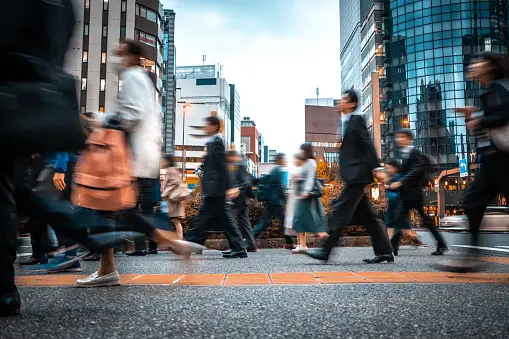Excitement About Street Photographers
The 7-Minute Rule for Street Photographers
Table of ContentsThe Best Strategy To Use For Street PhotographersA Biased View of Street PhotographersThe Single Strategy To Use For Street PhotographersWhat Does Street Photographers Do?Some Known Questions About Street Photographers.
Street professional photographers do not always have a social purpose in mind, but they prefer to isolate and capture minutes which may or else go unnoticed.He was affected by many of those that influenced the road photographers of the 1950s and '60s, he was not mainly interested in capturing the spirit of the road., who worked side by side with digital photographers attempting to record the essence of metropolitan life.
As a result of the somewhat primitive technology readily available to him and the lengthy exposure time required, he battled to capture the pressure of the Paris streets. He experimented with a series of photographic techniques, trying to locate one that would permit him to record movement without a blur, and he found some success with the calotype, patented in 1841 by William Henry Fox Talbot. Unlike Atget, professional photographer Charles Marville was worked with by the city of Paris to develop an encyclopaedic record of Haussmann's metropolitan preparation project as it unfolded, thus old and new Paris. While the digital photographers' topic was basically the same, the results were markedly different, demonstrating the effect of the professional photographer's bent on the personality of the photos he generated.
Provided the great quality of his photographs and the breadth of material, architects and artists commonly acquired Atget's prints to use as recommendation for their very own job, though commercial interests were hardly his primary inspiration. Rather, he was driven to photograph every last residue of the Paris he loved. The mingled enthusiasm and necessity of his goal sparkle through, resulting in photographs that narrate his own experience of the city, high qualities that expected street photography of the 20th century.
Street Photographers Things To Know Before You Get This
They expose the city through his eyes. His job and essential understanding of photography as an art type acted as inspiration to generations of photographers that adhered to. The following generation of road professional photographers, though they likely did not refer to themselves therefore, was introduced by the photojournalism of Hungarian-born digital photographer Andr Kertsz.
Unlike his peers, Brassa made use of a larger-format Voigtlnder camera with a much longer exposure time, forcing him to be much more calculated and thoughtful in his practice than he could have been if using a Leica. (It is thought that he might not have had the ability to manage a Leica back then, yet he did, nevertheless, use one in the late 1950s to take colour pictures.) Brassa's photographs of the Paris abyss brightened by synthetic light were a discovery, and the compilation of the collection that he released, (1933 ), was a significant success.
Cartier-Bresson was a champion of the Leica cam and among the first digital photographers to maximize its abilities. The Leica enabled the digital photographer to her response communicate with the surroundings and to catch moments as they happened. Its relatively little dimension likewise helped the photographer discolor right into the background, which was Cartier-Bresson's favored strategy.
What Does Street Photographers Mean?
It is due to this basic understanding of the art of photo taking that he is often credited with uncovering the medium around once more about a century given that its development. He took pictures for greater than a half century and affected generations of digital photographers to trust their eye and instinct in the moment.
These are the concerns I shall attempt to address: And afterwards I'll leave you with my own meaning of street photography. Yes, we do. Allow's begin with specifying what a meaning is: According to (Street Photographers) it is: "The act of defining, or of making something precise, distinctive, or clear"
No, most definitely not. The term is both restricting and misdirecting. Appears like a road digital photography must be photos of a roads ideal?! And all road digital photographers, with the exception of a handful of absolute newbies, will totally appreciate that a street is not the essential component to find out here road photography, and really if it's a photo of a street with possibly a few monotonous people doing nothing of passion, that's not street digital photography that's a photo of a road.
The 10-Second Trick For Street Photographers
He makes a legitimate factor don't you assume? While I agree with him I'm not sure "candid public photography" will certainly catch on (although I do kind of like the term "candid photography") since "street photography" has been around for a long time, with many masters' names connected to it, so I believe the term is here to remain (Street Photographers).
Inside?! I hear you scream as you tremble your clenched fist to the skies. Why not? You can contend the coastline, at a celebration, in an alley, in a park, in a piazza, in a coffee shop, at a gallery or art gallery, in a city station, at an occasion, on a bridge, under a bridge ...

The Greatest Guide To Street Photographers
